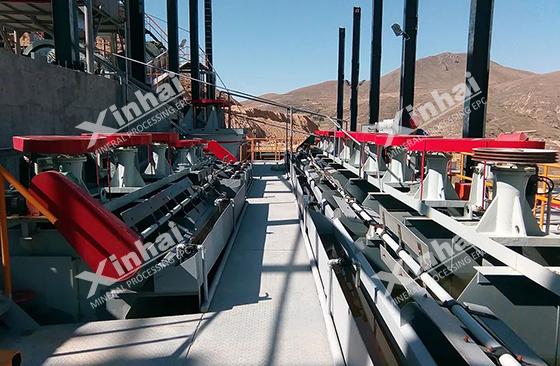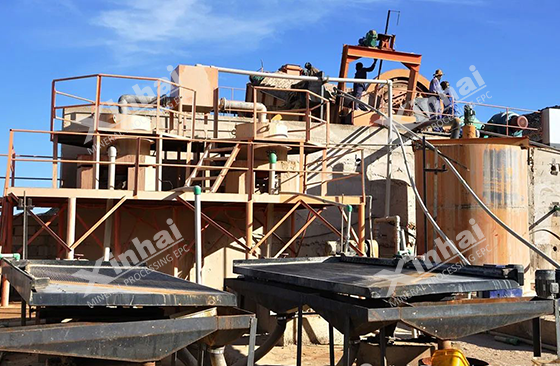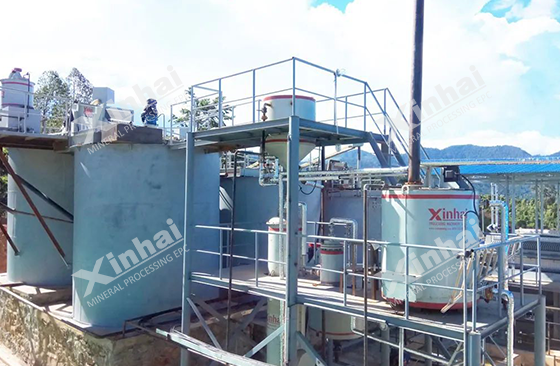
The beneficiation process in gold mines is a complex and delicate process designed to extract as much gold as possible from the ore. This article will explore a series of comprehensive strategies, including raw ore quality screening, mineral processing process optimization, and smelting and tailings management and recovery, to systematically improve the grade of gold ore concentrate.

Select quality raw gold ore is the first step to improve the grade of gold concentrate. Through the analysis of the chemical and physical properties of the ore, the ore with high gold content is selected. High-grade raw ore directly improves the quality of the concentrate. At the same time, factors such as the structure, impurity content and mineralogy characteristics of the ore will affect the extraction of gold and the final grade of the concentrate. An in-depth understanding of ore characteristics can optimize the entire mineral processing process. Therefore, taking these factors into consideration and implementing an effective ore screening strategy is critical to producing high-grade gold concentrates.
Optimizing the selection of mineral processing technology is the core link to improve the grade of gold concentrate. By optimizing crushing and grinding, flotation and gravity separation, and leaching processes, the grade of gold concentrate can be effectively improved and the efficient utilization of gold ore resources can be achieved.
1. Crushing and grinding process

Crushing and grinding processes are important preparation stages before gold ore separation. The goal is to break down gold ore into smaller particles to increase the exposure of metallic gold and facilitate gold extraction and recovery. Commonly used crushing equipment includes jaw crushers, hammer crushers, cone crushers, etc., while ball mills and autogenous grinders are usually used for grinding. The key is to control the crushing particle size and grinding fineness. The feed particle size and discharge particle size are important parameters that determine the crushing and grinding effects. According to the specific requirements of the subsequent process, different types of crushers need to be adjusted to appropriate parameter ranges to ensure that the particle size distribution of the ore is effectively controlled, reducing the over-grinding loss of gold particles, thereby increasing the gold recovery rate.
2. Flotation process

Flotation process is the separation of gold ore and other impurities through chemical treatment based on differences in physical and chemical properties of mineral surfaces. During the flotation process, select a suitable flotation machine, select appropriate collectors, regulators, foaming agents and other reagents, and control parameters such as slurry concentration, flotation time, reagent pH, temperature, aeration and stirring to optimize flotation conditions, thereby effectively improving metal recovery and concentrate grade.
3. Gravity separation process

The gravity separation process separates ores based on differences in density, shape and surface properties of the minerals. According to the characteristics of the ore and the distribution of gold particles, select appropriate gravity separation equipment, such as jig, shaker or spiral chute. In order to improve the gold recovery rate and concentrate grade, it is necessary to optimize process parameters, including ore feed volume, ore concentration, ore particle size, etc. Through these adjustments, the efficiency and quality of the gravity separation process can be effectively improved.
4. Leaching process

Gold ore leaching is the use of chemical reactions to dissolve gold from ores to form soluble compounds for subsequent gold recovery and purification. During the leaching process, multiple process parameters need to be controlled, including slurry pH, ore fineness, slurry temperature, stirring speed, dosage of chemicals, slurry solid-liquid ratio, leaching time and aeration volume, etc., to ensure effective leaching and improvement of gold leaching efficiency. By optimizing these parameters, gold grade and recovery can be improved.
The purpose of the smelting process is to further improve the extraction rate and purity of gold. By controlling the temperature, the use of smelting agents and the smelting time, impurities and toxic substances can be effectively removed from gold ore, ensuring a high recovery rate of gold, thereby improving the grade of gold concentrate.

Tailings still contain under-extracted gold metal, and effective tailings treatment is equally important to improve gold concentrate grade. Common methods include gravity separation, flotation, leaching, etc. These methods can effectively separate the gold particles in the tailings, and recover the gold metal in the tailings through physical or chemical treatment, which can not only improve the grade of the gold concentrate, but also It can improve the rational utilization rate of resources and reduce environmental pollution.
Improving the grade of gold ore concentrate is a complex systematic project, which requires careful planning and control in all aspects from the screening of raw ore to the final product. By effectively using gravity separation, flotation, cyanide leaching and other mineral processing methods, and making appropriate adjustments based on the specific conditions in actual production, the grade of gold concentrate can be effectively improved, thus bringing significant economic benefits. In the actual gold ore beneficiation process, other factors that may affect the concentrate grade also need to be considered, and the beneficiation process should be optimized based on these factors to achieve a higher gold concentrate grade.
To find out more about our products and solutions, please fill out the form below and one of our experts will get back to you shortly.